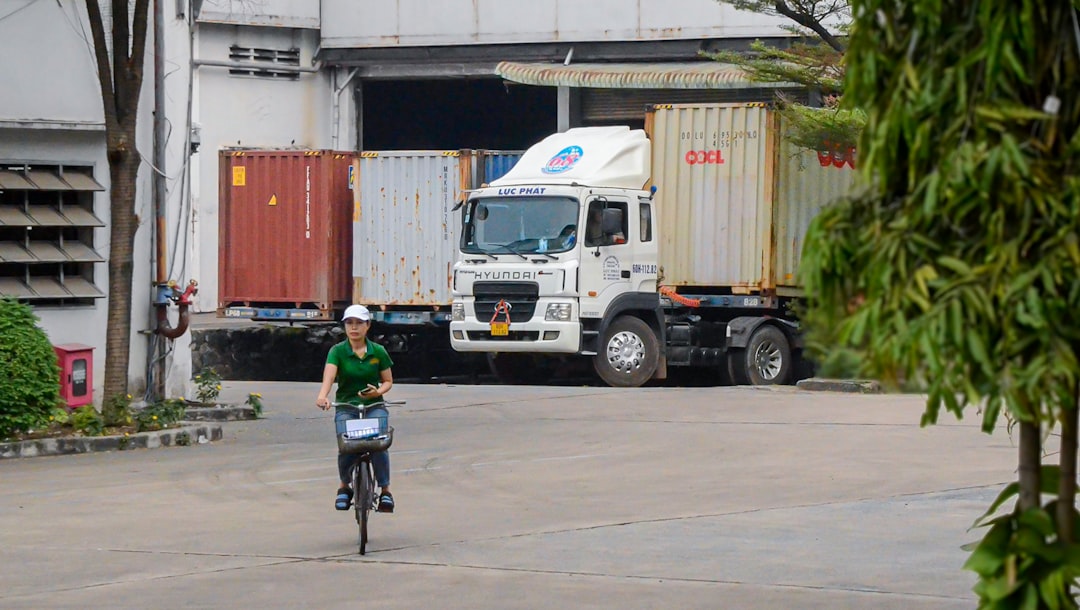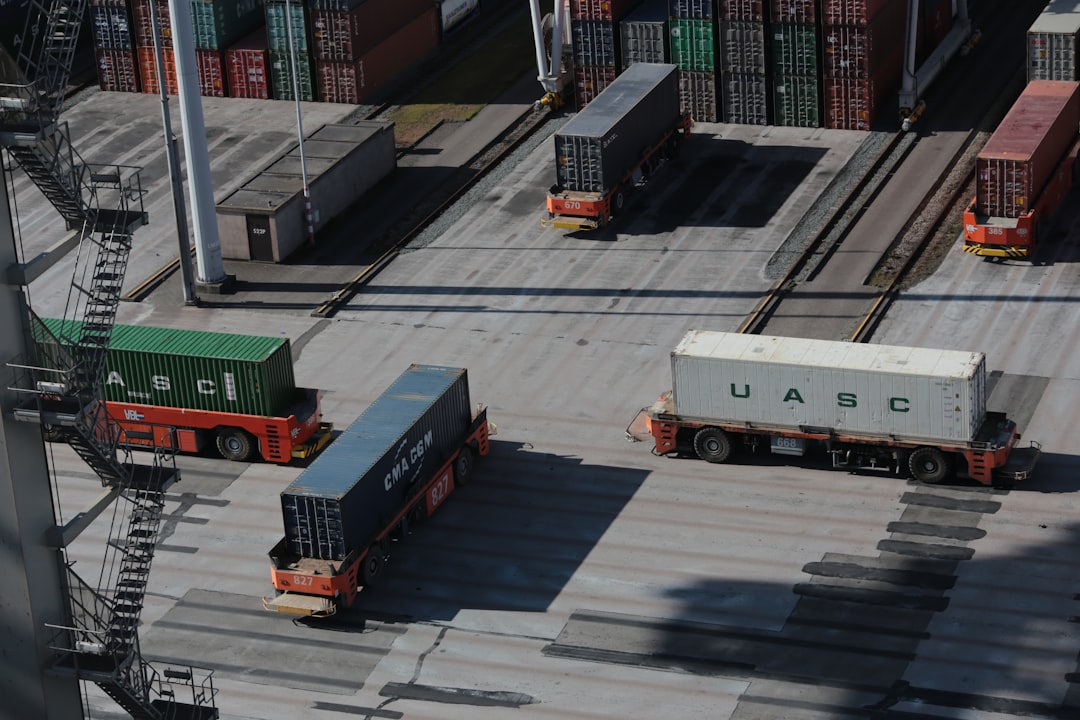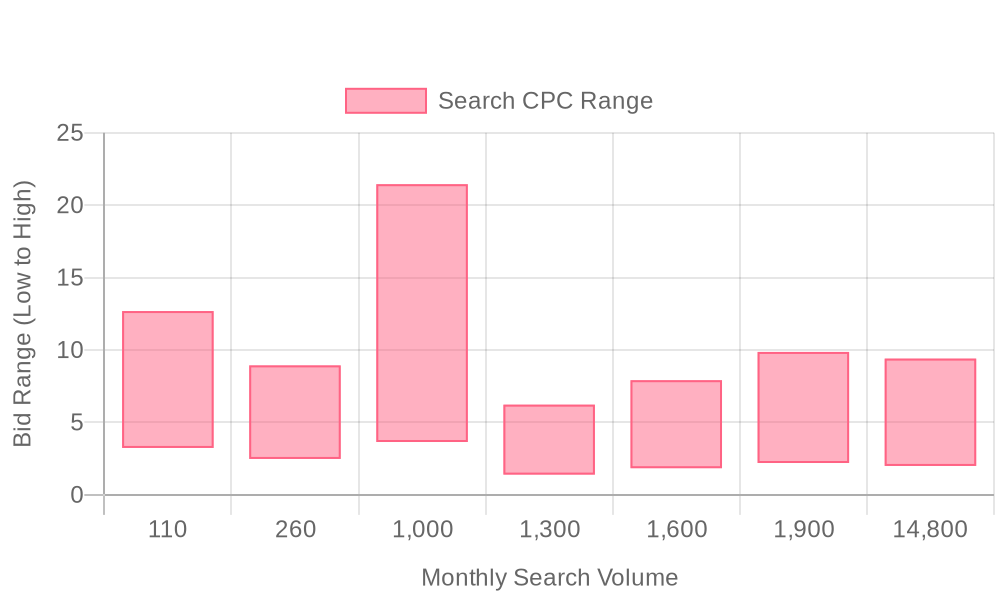
Supercharge your lead generation with a FREE Google Ads audit - no strings attached! See how you can generate more and higher quality leads
Get My Free Google Ads AuditFree consultation

No commitment
Supercharge your lead generation with a FREE LinkedIn Ads audit - no strings attached! See how you can generate more and higher quality leads
Get My Free Google Ads AuditFree consultation

No commitment
Supercharge your lead generation with a FREE Meta Ads audit - no strings attached! See how you can generate more and higher quality leads
Get My Free Google Ads AuditGet My Free LinkedIn Ads AuditGet My Free Meta Ads AuditFree consultation

No commitment
Supercharge your lead generation with a FREE Google Ads audit - no strings attached! See how you can generate more and higher quality leads
Get My Free Google Ads AuditFree consultation

No commitment
Freight brokers operate in a highly competitive, time-sensitive industry—where every lead counts. With shippers and carriers turning to Google to find fast, reliable solutions, Google Ads has become one of the most effective tools for freight brokers to generate qualified leads, stay visible, and scale their operations. This guide breaks down how to run Google Ads for freight brokerage businesses, from campaign setup to targeting strategies, so you can drive more quote requests, increase booked loads, and outpace your competitors online.

Freight brokers operating in a highly competitive digital environment need precision and agility to capture the right leads and convert them into lasting clients. A tactical approach to Google Ads ensures your budget directly supports revenue growth, not wasted clicks or low-value inquiries. Leveraging unified, actionable data throughout your marketing stack allows for seamless engagement with decision-makers across the freight and logistics ecosystem.
Integrating Google Ads with a broader, data-driven marketing strategy is essential for freight broker client acquisition. Disconnected intent signals across platforms often dilute campaign effectiveness and make it difficult to identify true buying signals. By synchronizing your intent and engagement data, you create a cohesive outreach program that responds instantly to in-market activity, maximizing every advertising dollar spent.
Effective freight advertising relies on granular keyword and audience targeting aligned to the unique buying triggers of freight broker prospects. Without fit scoring and dynamic audience management, campaigns can quickly become diluted by low-intent traffic. Advanced platforms enable marketers to segment audiences based on real-time behaviors, ensuring only high-potential leads receive tailored messaging—drastically improving lead generation for freight brokers and reducing wasted spend.
Landing page experiences and creative messaging must align precisely with user intent to drive conversions in the digital marketing for freight sector. Even a brief delay in follow-up risks losing engaged prospects to faster competitors. Real-time visitor identification and automated lead routing ensure every inquiry is prioritized, while direct integration with CRM and ad platforms helps synchronize engagement and follow-up, increasing conversion rates.
Continuous Google Ads optimization is mandatory for maximizing ROI in trucking industry ads. Performance data should be tied to specific revenue touchpoints, enabling teams to justify spend and make rapid adjustments based on true impact. Advanced conversion tracking and online/offline attribution provide the clarity needed to optimize campaigns and prove their value to the business. For step-by-step tactical advice, check out this tutorial on Google Ads for logistics companies.
A cross-channel marketing approach further strengthens freight broker marketing efforts by ensuring every engagement signal—whether from paid search, email, or outbound sales—is connected and actionable. Dynamic audience updates and CRM sync allow for automated retargeting and nurturing, reducing the risk of missing high-value opportunities and supporting a unified, high-performing demand generation engine. For those seeking to advance their retargeting strategies, integrating these signals across platforms ensures no prospect falls through the cracks. If you're ready to streamline your lead generation, get started for free with Sona.
Digital advertising is a critical lever for freight brokers seeking to reach logistics managers and shipping coordinators at the precise moment they are searching for transport solutions. Google Ads stands out by capturing this specialized audience during high-intent queries, allowing brokers to distinguish serious buyers from casual browsers and allocate spend more efficiently with real-time audience intelligence.
Freight brokers routinely compete for high-margin contracts that can transform quarterly revenues. Google Ads enables outreach to prospects who are not yet in your sales funnel, while identification tools and sophisticated lead scoring help prevent valuable opportunities from slipping away due to inadequate qualification.
Timeliness is everything in the logistics sector, where demand spikes can occur without warning. Google Ads equips freight brokers with the ability to respond immediately during peak shipping seasons, ensuring that urgent requests convert into contracts before opportunities stagnate. In addition, digital campaigns make it possible to identify and capitalize on emerging markets where traditional channels underperform, as detailed in this overview of Google Ads strategies for freight revenue.
The platform’s closed-loop measurement capabilities offer brokers a comprehensive view from click to contract, providing actionable data on what campaigns and audience segments drive the most profitable freight deals. Integrating advanced attribution tools and real-time insight features enables marketing teams to optimize spend, refine messaging, and sync enriched audiences across CRM and ad platforms for continuous improvement and higher ROI. To see how you can put these strategies into practice, get started for free with Sona.


Freight brokers aiming to scale must identify clear pockets of growth within an increasingly crowded market. Precision targeting and data-driven audience segmentation consistently outperform broad, generic advertising when it comes to efficient client acquisition.
Ready to unlock more growth opportunities? Get started for free with Sona.

Smart audience segmentation empowers freight brokers to allocate resources with precision, driving higher-quality leads and minimizing wasted ad spend. By structuring campaigns around real business needs and behaviors, freight teams gain clarity on which prospects are most likely to convert and bring long-term value. Explore more strategies in the Sona blog to strengthen your segmentation approach.

| Industry | Keyword | Monthly Search Volume | Competition Level | Low Bid | High Bid |
| Freight Brokers | shippers list for freight brokers | 110 | MEDIUM | 3.24 | 12.69 |
| Freight Brokers | best freight brokers for owner operators | 260 | LOW | 2.48 | 8.94 |
| Freight Brokers | shipping broker | 1000 | MEDIUM | 3.65 | 21.45 |
| Freight Brokers | freight dispatcher | 1300 | MEDIUM | 1.4 | 6.23 |
| Freight Brokers | truck broker | 1600 | MEDIUM | 1.84 | 7.92 |
| Freight Brokers | freight brokers near me | 1900 | MEDIUM | 2.2 | 9.87 |
| Freight Brokers | freight brokers | 14800 | LOW | 2 | 9.41 |
High-intent keyword targeting is foundational for digital marketing in the freight brokerage space. When freight brokers choose keywords like “freight broker services near me,” “logistics solutions,” or “freight shipping quotes,” they align their ads with buyers actively searching for logistics partners, greatly increasing the chance of conversion and efficient client acquisition. For more guidance on aligning keywords with business goals, explore this step-by-step Google Ads setup for logistics companies.
Campaigns must not only focus on attracting these ready-to-convert prospects but also actively exclude unqualified traffic. Integrating negative keywords such as “free freight calculator” or “become a freight broker” ensures budgets are reserved for leads ready to transact, not those seeking free resources or industry entry. This strategic filtering is essential for maximizing Google Ads ROI and reducing wasted spend in freight advertising. For actionable campaign tactics, review the Sona blog for insights on optimizing B2B ad performance.
By leveraging unified intent data, revenue teams can identify which search terms signal a genuine need for freight services versus low-funnel research or competitor queries. Advanced platforms enable marketers to pinpoint the companies behind high-value searches by using Sona Identification, connecting anonymous ad engagement to real-world accounts. This real-time insight lets freight brokers adjust spend dynamically, focusing on keywords proven to drive revenue and nurturing leads as they mature through the sales funnel. Precision in keyword strategy translates to more qualified leads, higher conversion rates, and measurable growth in lead generation for freight brokers. To start optimizing your keyword targeting and lead generation, get started for free with Sona.
Freight brokers seeking measurable results from Google Ads need a sharply focused keyword foundation. Start with logistics-specific queries, using long-tail variants such as “freight broker near me,” “LTL shipping quotes,” or “truckload broker for manufacturers.” This approach captures both high-intent buyers and those evaluating options, minimizing waste and surfacing new demand pockets. Including modifiers like “same-day,” “expedited,” or “reliable” filters clicks toward prospects who are ready to convert.
Precision in keyword research pays off when paired with intent data. By leveraging real-time visitor identification, marketers can dynamically refine their keyword lists based on which companies are actively researching freight services. This enables ad spend to shift automatically toward the most sales-ready accounts and away from segments unlikely to convert, increasing both efficiency and impact.
Effective Google Ads for freight brokers require copy that moves beyond generic claims. Address core industry challenges such as shipping delays, rate transparency, and regulatory compliance. Phrases like “instant carrier matching,” “24/7 shipment tracking,” or “FMCSA-licensed broker” provide reassurance and build trust at a glance. Use social proof: reference client logos, testimonials, or on-time delivery percentages to validate credibility and establish authority.
For B2B revenue teams, ad copy personalization can be taken further by syncing CRM insights and enriched lead data into ad groups. This enables delivery of tailored messaging to decision-makers at different buying stages or verticals, improving both click-through and conversion rates. Continual alignment between ad creative and real-time intent signals ensures your freight advertising always speaks directly to the audience’s current needs. For additional strategies on using Google Ads to drive revenue in freight and logistics, see this overview.
Landing pages are the linchpin of freight broker client acquisition. Each page should directly match the ad’s keyword and value proposition, eliminating disconnects that drive up bounce rates. Incorporate trust indicators such as DOT/MC numbers, BBB ratings, and customer success stories. Streamlined calls-to-action—like “Request a Freight Quote” or “Book a Consultation”—reduce friction and decision fatigue, guiding users to the next step without distraction.
With unified go-to-market data, marketers can further optimize landing pages by tracking visitor journeys across sessions and devices. Understanding which segments convert allows for rapid A/B testing of layouts, headlines, and CTAs. When audiences update dynamically as leads move through the funnel, landing page experiences can be personalized in real time, boosting conversion rates and accelerating the sales cycle.
Continuous optimization is essential for Google Ads ROI in freight broker marketing. Track every conversion event—whether form fills, phone calls, or CRM updates—attributing results to the right campaign and keyword. Use smart bidding strategies, such as Target CPA or ROAS, to automatically allocate budget to the highest-performing segments. Run multivariate tests on headlines, descriptions, and landing page elements to systematically improve outcomes.
When campaign data, web analytics, and offline sales activity are integrated, marketers gain a 360-degree view of performance across the funnel. Connecting ad platforms to CRM and marketing automation systems allows ad audiences to be updated in near real time, ensuring retargeting efforts remain relevant and efficient. Advanced attribution models surface true revenue impact, enabling digital marketing for freight brokers to scale with confidence and precision.

Promoting educational assets through remarketing campaigns keeps your brand front and center for prospects who have already engaged with your site. Delivering whitepapers, case studies, or webinars in display or video retargeting formats nurtures leads over longer sales cycles and addresses common freight broker objections with credible, useful information. For ideas on optimizing remarketing strategies for freight, explore this community discussion on using Google Ads to get more clients and learn how Sona Buyer Journeys can help track every prospect touchpoint to refine your follow-up.
Segmented audience strategies enable upselling and cross-selling by targeting specific buyer groups with tailored offers. For example, a segmented list of shippers who previously inquired about LTL freight can receive ads for full truckload services, ensuring continuous engagement. Leveraging real-time audience behavior and intent allows marketers to update these segments dynamically, capturing shifts in customer needs and surfacing the most relevant offers at the right time.
Collaboration with industry associations amplifies reach by tapping into pre-established trust networks. Contributing thought leadership to association newsletters or co-sponsoring educational webinars increases referral traffic and builds authority with decision-makers. This approach helps freight brokers overcome initial market resistance and positions the business as a preferred partner within the logistics ecosystem. For digital marketers looking to unify data and attribute referral performance, discover more strategies on our blog.
Freight brokers who excel with Google Ads achieve results by focusing on the industry’s distinct demands: rapid response, high-value transactions, and fast-moving client cycles. For actionable peer strategies and campaign insights, see this community discussion on using Google Ads for freight brokers, or explore our demand generation playbooks for additional tactics.
Effective campaigns address persistent pain points such as untracked prospects or sluggish engagement, ensuring that every click and impression contributes to pipeline growth. By investing in continuous campaign improvement, brokers not only attract new customers but also build lasting relationships that sustain client retention and long-term revenue.
Modern freight broker marketing benefits from integrating advanced data solutions that unify campaign interactions across digital channels. Identifying exactly who visits your site—moving beyond anonymous traffic—enables marketers to recognize and prioritize high-value shippers or carriers. Real-time behavioral signals surface which accounts are most likely to convert, allowing budget and messaging to shift dynamically toward top-performing segments.
Synchronizing CRM and ad platforms streamlines follow-ups and nurtures leads as they progress in the buying journey. Automated audience updates mean ads remain relevant even as priorities shift within target accounts. Comprehensive conversion tracking, including both online and offline events, ensures marketing success is measured with accuracy, driving greater accountability and clear ROI for every marketing dollar spent. In a competitive freight landscape, this data-driven approach sets brokers apart and powers sustainable growth. Ready to transform your logistics marketing? Get started for free with Sona.
Implementing Google Ads in your freight brokerage business can be a game-changer, providing a powerful avenue to attract new clients and drive revenue growth. As we've explored, the strategic use of Google Ads requires a clear understanding of your target market, effective keyword utilization, and continuous performance monitoring to optimize your campaigns.
Navigating the complexities of digital advertising presents challenges, from selecting the right keywords to crafting compelling ad copy and setting appropriate budgets. However, by leveraging the insights and strategies discussed, you can enhance your online visibility and attract potential clients actively seeking freight brokerage services.
Imagine the transformation in your business when you harness the full potential of Google Ads, creating a steady pipeline of interested clients and boosting your bottom line. With the right tools and approach, you have the ability to propel your freight brokerage to new heights, making your business a recognized leader in the industry.
To take the next step and see these strategies in action, start for free to experience our platform and its capabilities. Let us support you in transforming your digital advertising efforts into real, measurable success.
Freight brokers can effectively use Google Ads by targeting high-intent keywords, aligning landing pages with user intent, and integrating ad campaigns with CRM systems for seamless lead follow-up and conversion tracking.
The budget for Google Ads in freight brokerage should focus on maximizing ROI by targeting high-intent keywords and using real-time data to allocate spend efficiently, ensuring that funds directly support revenue growth instead of low-value clicks.
Best practices for Google Ads in the freight industry include precision keyword targeting, audience segmentation, continuous campaign optimization, and using real-time intent signals to dynamically adjust ad spend and messaging.
Success of Google Ads campaigns for freight can be measured through continuous optimization, advanced conversion tracking, and connecting ad performance with revenue touchpoints to justify spend and make data-driven adjustments.
Freight brokers should target high-intent keywords such as 'freight broker services,' 'logistics solutions,' and 'freight shipping quotes,' while excluding negative keywords like 'free freight calculator' to focus budget on ready-to-convert prospects.
Join results-focused teams combining Sona Platform automation with advanced Google Ads strategies to scale lead generation

Connect your existing CRM

Free Account Enrichment

No setup fees
No commitment required

Free consultation

Get a custom Google Ads roadmap for your business
Join results-focused teams combining Sona Platform automation with advanced Meta Ads strategies to scale lead generation

Connect your existing CRM

Free Account Enrichment

No setup fees
No commitment required

Free consultation

Get a custom Google Ads roadmap for your business
Join results-focused teams combining Sona Platform automation with advanced LinkedIn Ads strategies to scale lead generation

Connect your existing CRM

Free Account Enrichment

No setup fees
No commitment required

Free consultation

Get a custom Google Ads roadmap for your business
Join results-focused teams using Sona Platform automation to activate unified sales and marketing data, maximize ROI on marketing investments, and drive measurable growth

Connect your existing CRM

Free Account Enrichment

No setup fees
No commitment required

Free consultation

Get a custom Google Ads roadmap for your business
Over 500+ auto detailing businesses trust our platform to grow their revenue
Join results-focused teams using Sona Platform automation to activate unified sales and marketing data, maximize ROI on marketing investments, and drive measurable growth

Connect your existing CRM

Free Account Enrichment

No setup fees
No commitment required

Free consultation

Get a custom Google Ads roadmap for your business
Over 500+ auto detailing businesses trust our platform to grow their revenue
Join results-focused teams using Sona Platform automation to activate unified sales and marketing data, maximize ROI on marketing investments, and drive measurable growth

Connect your existing CRM

Free Account Enrichment

No setup fees
No commitment required

Free consultation

Get a custom Google Ads roadmap for your business
Over 500+ auto detailing businesses trust our platform to grow their revenue
Our team of experts can implement your Google Ads campaigns, then show you how Sona helps you manage exceptional campaign performance and sales.
Schedule your FREE 15-minute strategy sessionOur team of experts can implement your Meta Ads campaigns, then show you how Sona helps you manage exceptional campaign performance and sales.
Schedule your FREE 15-minute strategy sessionOur team of experts can implement your LinkedIn Ads campaigns, then show you how Sona helps you manage exceptional campaign performance and sales.
Schedule your FREE 15-minute strategy sessionOur team of experts can help improve your demand generation strategy, and can show you how advanced attribution and data activation can help you realize more opportunities and improve sales performance.
Schedule your FREE 30-minute strategy sessionOur team of experts can help improve your demand generation strategy, and can show you how advanced attribution and data activation can help you realize more opportunities and improve sales performance.
Schedule your FREE 30-minute strategy sessionOur team of experts can help improve your demand generation strategy, and can show you how advanced attribution and data activation can help you realize more opportunities and improve sales performance.
Schedule your FREE 30-minute strategy sessionOur team of experts can help improve your demand generation strategy, and can show you how advanced attribution and data activation can help you realize more opportunities and improve sales performance.
Schedule your FREE 30-minute strategy session





Launch campaigns that generate qualified leads in 30 days or less.
